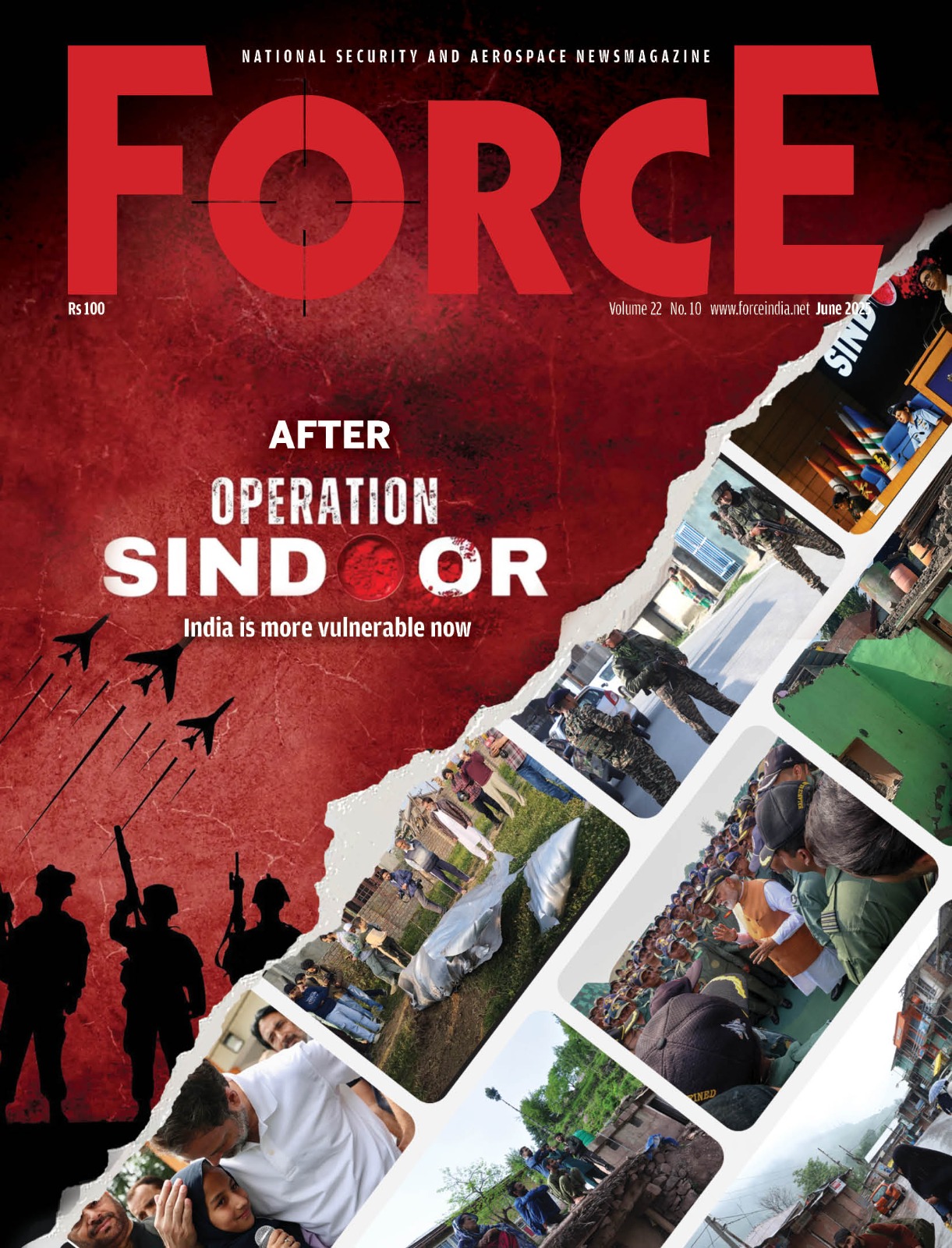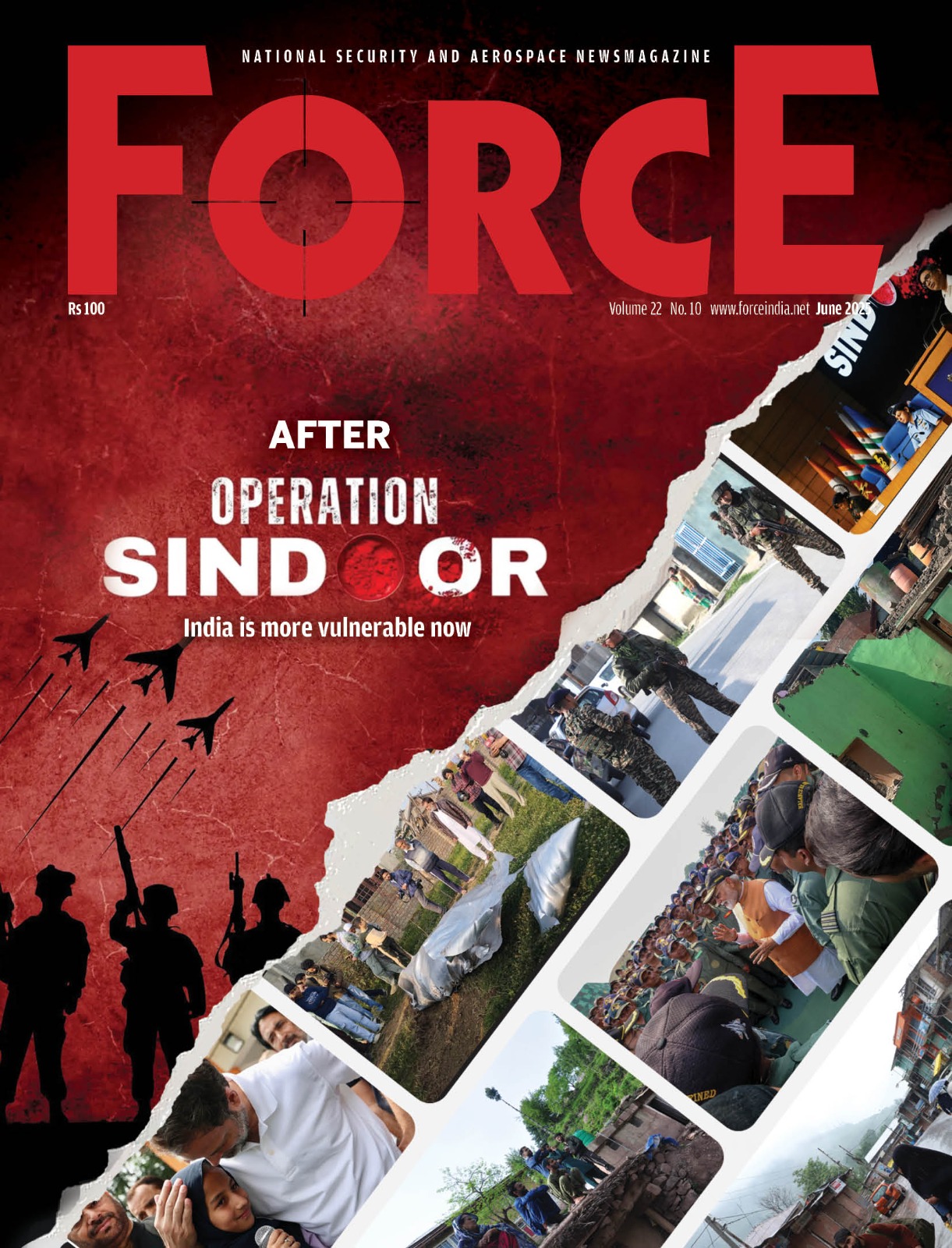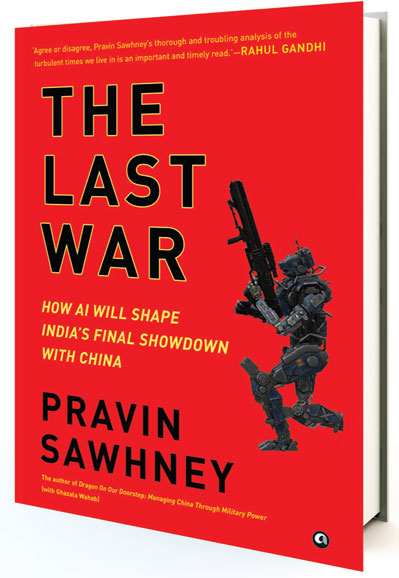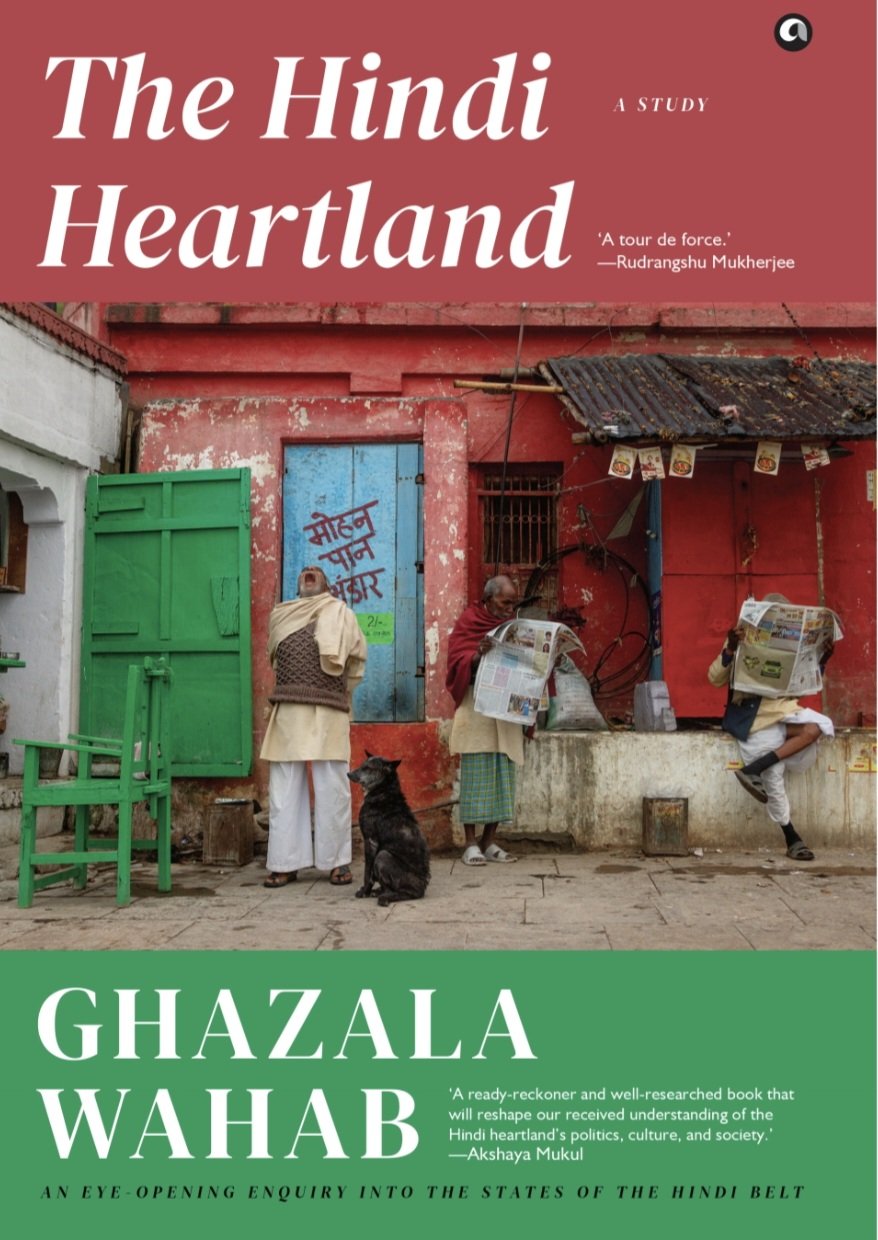Please bear with us for a few days. We are making ourselves better
A Manual for Security
 India’s neighbourhood in South Asia
is the second most unstable region in the world and is competing closely with
West Asia for the number one spot. In the Arabian Peninsula, Yemen’s Houthis
backed by Iran are holding their own against the forces of Saudi Arabia and the
UAE and the mercenaries employed by both. Further west, in the perpetually
strife-torn West Asian region, the virulently radical Sunni militants of the
Islamic caliphate (also called Daesh, the Islamic State of Iraq and Syria—
ISIS—or the Islamic State of Iraq and the Levant—ISIL) proclaimed by Abu Bakr
al-Baghdadi is engaged in a vicious fight with the armed forces of Iraq and
Syria and the Peshmerga—forces of the Kurdistan Regional Government (KRG) from
the Kurdish belt along the Iraq–Turkey border. The ISIS has captured territory
in Iraq and Syria and has demonstrated its ability to defend its gains despite
having lost the central city of Fallujah to Iraqi forces in 2016. In the civil
war that has been raging in Syria since 2011, almost 250,000 people have been
killed and thousands of refugees have migrated to Europe; many hundreds have
perished in the attempt.
India’s neighbourhood in South Asia
is the second most unstable region in the world and is competing closely with
West Asia for the number one spot. In the Arabian Peninsula, Yemen’s Houthis
backed by Iran are holding their own against the forces of Saudi Arabia and the
UAE and the mercenaries employed by both. Further west, in the perpetually
strife-torn West Asian region, the virulently radical Sunni militants of the
Islamic caliphate (also called Daesh, the Islamic State of Iraq and Syria—
ISIS—or the Islamic State of Iraq and the Levant—ISIL) proclaimed by Abu Bakr
al-Baghdadi is engaged in a vicious fight with the armed forces of Iraq and
Syria and the Peshmerga—forces of the Kurdistan Regional Government (KRG) from
the Kurdish belt along the Iraq–Turkey border. The ISIS has captured territory
in Iraq and Syria and has demonstrated its ability to defend its gains despite
having lost the central city of Fallujah to Iraqi forces in 2016. In the civil
war that has been raging in Syria since 2011, almost 250,000 people have been
killed and thousands of refugees have migrated to Europe; many hundreds have
perished in the attempt.
Despite
Russia entering the fight against the ISIS and the formation of a coalition of
thirty-four Islamic nations by Saudi Arabia, the terror group has consolidated
its hold on the territory it has gained across the Iraqi and Syrian borders. In
its cyber and word-of-mouth outreach, it has begun propagating its future plans
to extend the caliphate to the east to Khorasan (Afghanistan, Iran and
Pakistan) and to then fight the Ghazwa-e-Hind—the last battle for Hindustan. It
even managed to capture and temporarily hold a few districts in the Nangarhar
province of Afghanistan, appointed a regional head for South Asia and declared
Bangladesh as a new battleground.
After the
completion of the hasty NATO–ISAF (International Security Assistance Force)
draw-down in Afghanistan, the Taliban are once again showing signs of
resurgence. They control a large swathe of territory in the Sangin district of
Helmand province in southern Afghanistan and elsewhere and have succeeded in
launching several terrorist strikes in Kabul. Pakistan-sponsored reconciliation
talks with the Taliban broke down in July 2015, when President Ashraf Ghani got
tired of Pakistan’s double games. Rahmatullah Nabil, the head of the National
Directorate of Security, Afghanistan’s intelligence service, resigned saying
Pakistan cannot be trusted. President Ghani has called the Pakistan Taliban the
greatest threat facing Afghanistan. A gradual descent into civil war appears to
be the most likely outcome in Afghanistan.
 The Pakistani army is still
struggling to complete operation Zarb-e-Azb to eliminate the Tehreek-e-Taliban
Pakistan (TTP) in North Waziristan. Pakistan’s internal turbulence is a major
cause of regional instability. The instability along the Hindu Kush mountains
on the Af-Pak border; the Pakistani army’s prolonged operations against
home-grown Taliban like the TTP and the Tehreek-e-Nafaz-e-Shariat-e-Mohammadi
(TNSM); fissiparous tendencies in Balochistan; continuing radical extremism and
creeping Talibanization that has reached the Punjabi heartland; ethnic
tensions, including protracted violence against the Shias and the Ahmadiyyas;
and the floundering economy signal the nation’s gradual slide towards becoming
a ‘failed state’. Pakistan’s pursuit of ‘full- spectrum nuclear deterrence’,
particularly its quest for the acquisition of tactical nuclear weapons (TNW)
for battlefield use, is a major cause for instability at the strategic level.
The Pakistani army is still
struggling to complete operation Zarb-e-Azb to eliminate the Tehreek-e-Taliban
Pakistan (TTP) in North Waziristan. Pakistan’s internal turbulence is a major
cause of regional instability. The instability along the Hindu Kush mountains
on the Af-Pak border; the Pakistani army’s prolonged operations against
home-grown Taliban like the TTP and the Tehreek-e-Nafaz-e-Shariat-e-Mohammadi
(TNSM); fissiparous tendencies in Balochistan; continuing radical extremism and
creeping Talibanization that has reached the Punjabi heartland; ethnic
tensions, including protracted violence against the Shias and the Ahmadiyyas;
and the floundering economy signal the nation’s gradual slide towards becoming
a ‘failed state’. Pakistan’s pursuit of ‘full- spectrum nuclear deterrence’,
particularly its quest for the acquisition of tactical nuclear weapons (TNW)
for battlefield use, is a major cause for instability at the strategic level.
Almost all
the countries in South Asia are beset by socio-economic disparities, political
tensions, radical extremism and ethnic challenges. Sri Lanka continues to
struggle to find a lasting solution to its ethnic tensions. The rise of Islamist
fundamentalism in Bangladesh could trigger new forces of destruction if left
unchecked. The government of Sheikh Hasina and the Narendra Modi government in
India are cooperating to neutralize organizations like the
Harkat-ul-Jihad-e-Islami (HuJI) and the Jamaat-ul-Mujahideen Bangladesh (JMB).
The political situation in Nepal remains fragile. The Madhesi stand-off in protest against the promulgation of a flawed constitution continues in one form or another. Nepal’s desire to seek neutrality between India and China is a setback to what has historically been a stable India–Nepal relationship. Simmering discontent that is gathering momentum in Tibet and Xinjiang against China’s repressive regime has the potential to snowball into a full-blown revolt. The long-festering insurgencies in Myanmar may destabilize the government despite its post-election confidence. Iran’s nuclear deal with the US and its strategic partners has provided a rare silver lining in a strife-torn region.
External
Threats and the China–Pakistan Nexus
India has major territorial and boundary disputes with Pakistan and China in
Jammu and Kashmir (J&K) and with China over Arunachal Pradesh and, to a
limited extent, on the Uttarakhand–Tibet border. For almost seven decades now
Pakistan has been fighting a low-intensity limited war with India on the Line
of Control (LoC). The proxy war of the Pakistan army and the Inter-Services
Intelligence (ISI) against India, now in its third decade, poses a serious
threat to India’s territorial integrity even though there has been a gradual
reduction in the number of infiltration attempts across the LoC in J&K and
in the incidents of violence over the ten years up to 2016.
In 2014-15,
the Pakistan army repeatedly violated the mutually observed ceasefire agreement
of 25 November 2003 on the LoC, but a stronger-than-usual Indian response
quickly neutralized these efforts. Because of terrorist strikes at Gurdaspur,
Udhampur and Pathankot, sponsored by Pakistan’s ‘Deep State’ (the army and the
ISI), ties between India and Pakistan remain stuck in a groove despite the
initiative taken by the two prime ministers to revive stalled negotiations
through a twelve-point Comprehensive Bilateral Dialogue.
China is in
physical occupation of 38,000 sq km of Indian territory on the Aksai Chin
plateau in Ladakh and claims the entire state of Arunachal Pradesh
(approximately 93,000 sq km), which it calls Southern Tibet. The Line of Actual
Control (LAC) on India’s border with Tibet has not been demarcated on the
ground and on military maps, and perceptions about where it runs vary on both
sides. Though no shot has been fired in anger for several decades,
transgressions, stand-offs and face-offs on the LAC are common. One of these
could flare up and escalate into a local border skirmish with the risk of
further escalation. While several confidence-building measures (CBM) are in
place, these do not work very well during moments of crisis. Hence, the early
resolution of the territorial dispute should be a national priority.
The Indian
and Chinese worldviews are widely divergent. India recognizes China’s military
power and economic strength, but it is itself a country with a rapidly growing
economy that will be a close second to China’s in fifteen to twenty years and a
population that will overtake China’s in the same timeframe—with a much younger
workforce. India sees itself as a co-equal Asian power and accepts that
competition for influence and markets is inevitable between the two Asian
giants. In the interest of peace and stability in the Indo-Pacific, India is
willing to work cooperatively with China.
However,
Chinese thinking is driven by a different calculus. According to a Chinese
saying, one mountain cannot accommodate two tigers. China thinks of itself as
the only tiger on the Asian mountain and is reluctant, even unwilling, to cede
any strategic space to India. China’s grand strategy is to confine India to the
backwaters of the Indian Ocean as a subaltern state. It is engaged in the
encirclement of India on land through inroads into each one of India’s
neighbours and in the Indian Ocean through its ‘String of Pearls’ strategy,
wherein each pearl is a naval port at present and a potential naval base.
China is
seeking to team up with Russia to pursue a joint strategy against the US and
its strategic partners, even though Russia’s response has been lukewarm so far.
The China–Pakistan strategic partnership is a de facto military alliance. The
friendship between the two has been described by senior leaders on both sides
as being ‘higher than the mountains, deeper than the oceans, stronger than
steel and sweeter than honey. China … sees a strong, capable Pakistan as an
asset … An India that is forced to look nervously over its shoulder at its
western neighbour is easier for China to manage.’ China has ‘guaranteed’
Pakistan’s territorial integrity.
Pakistan’s
proxy war against India is China’s proxy war too, as Pakistan would be in no
position to sustain a protracted sub-conventional conflict with India without
Chinese backing. The growing nexus of nuclear warheads, ballistic missiles and
military technology between China and Pakistan is adding to regional
instability. By gifting to Pakistan nuclear warhead designs; testing Pakistan’s
nuclear warheads in the Lop Nor range—as is widely believed; by transferring
crated M-9 and M-11 ballistic missiles to Pakistan; and facilitating the
transfer of Nodong and Taepo Dong missiles from North Korea, China has
irrevocably changed the geo-strategic equation in South Asia. It has pulled
Pakistan up to India’s level and it cannot now be undone.
China has
made a commitment to spend $46 billion to link Xinjiang with Karachi and Gwadar
under the China–Pakistan Economic Corridor (CPEC) programme, which is part of
China’s One Belt, One Road (OBOR) or Silk Road initiative. India objects to the
northern portion of the road-cum-oil pipeline project passing through
Gilgit–Baltistan, an area that is part of the disputed territory of J&K.
Despite all the negatives, the India–China relationship is stable at the
strategic level, but politically, diplomatically and militarily unstable at the
tactical level. China’s objection to India’s membership of the Nuclear
Suppliers Group (NSG) is an example of instability at the tactical level. As
long as the territorial and boundary disputes with China and Pakistan are not
resolved, the possibility of conflict cannot be discounted, even though the
probability is low. And if there is conflict with either one of them, given
their deep nexus, both may be expected to come to each other’s aid, though in
varying degrees.
Clearly,
India is confronted with a ‘two-front’ threat from China and Pakistan. However,
while a border skirmish can never be ruled out in view of the competition along
unsettled borders, the probability of large-scale conflict with either China or
Pakistan will remain low for a decade or so. China is engaged in consolidating
its economic gains and is undertaking major military reforms even as it
modernizes its armed forces and strives to bring them to RMA (Revolution in
Military Affairs) standards.
China’s key
security concerns are limited to the merger of Taiwan with the mainland and the
peaceful resolution of dissidence in Tibet and Xingjian. Pakistan is involved
in fighting the demons within, demons of its own creation. Its armed forces are
fighting radicalization and creeping Talibanization even as they have been
bruised by the counter-insurgency campaign Zarb-e-Azb in Khyber Pakhtoonkhwa.
It would not be in Pakistan’s interest for the army to initiate hostilities
with India. This gives India a ten-year window to modernize its armed forces
and upgrade combat capabilities while undertaking socio-economic development
and remaining prepared for a short, sharp border skirmish.
Internal
Threats
Though it is an ancient civilization, India is a young nation state that is
still engaged in the process of nation building. This process has been marked
by ethnic tensions, fissiparous tendencies and socio-economic challenges.
India has
been saddled with a long-drawn low-level insurgency in J&K due to its
inability to fully integrate all parts of the state with the national
mainstream. Several of India’s north-eastern states have been in turmoil for
many decades due to political and economic neglect, poor governance and,
consequently, inadequate socio-economic development.
However, the
insurgencies in the north-east are now waning, and it is time to launch a major
drive aimed at providing good governance and stepping up socio-economic
development. The rising tide of left-wing extremism (LWE) or Maoist/Naxalite
terrorism has engulfed large parts of central India. Former prime minister
Manmohan Singh had called the Maoist threat India’s number one internal
security threat on several occasions. The state governments have been unable to
cope successfully with the challenge posed by these raiders of the night.
Emerging
Threats and Challenges
Even as India grapples with diverse external and internal threats to its
security, many new challenges are emerging on the national security horizon.
These include cyber and information warfare threats to critical infrastructure
and military command and control systems; the threat of mass migrations from
neighbouring countries due to extreme poverty, natural disasters and political
instability; the dangers inherent in the proliferation of small arms (light
weapons); difficulties inherent in providing energy security as fossil fuels
will become more and more inadequate for the nation’s increasing energy needs;
successive droughts hampering efforts to achieve water security; exponential
increase in threats to India’s maritime security and resources in its exclusive
economic zone (EEZ); security of the environment and the preservation of the
ecological balance; and the security of the Indian diaspora, especially in the
Gulf region.
Besides
these, still newer challenges that are emerging on the horizon include those
from organized crime and narco-terrorism as India is flanked by two of the most
notorious narcotics-producing regions in the world: the Golden Crescent
(Afghanistan, Iran and Pakistan) to the west and the Golden Triangle (Laos,
Myanmar and Thailand) to the east. Money laundering and the issue of fake
currency by inimical neighbours are new problems to contend with. The Asian
financial crisis demonstrated that a nation’s currency can be undermined
through external intervention and its economy can be destabilized.
Pakistan’s
ISI has been engaged in circulating fake currency notes as part of its efforts
to systematically destabilize India’s currency and also fund its sponsorship of
terrorist activities in India. The Ministry of Defence Annual Report of 1995-96
listed several other non-military ‘pressures’ on the national security
environment which cannot be ignored. These include ‘those relating to trade,
intellectual property rights, environment, human rights…’
Subscribe To Force
Fuel Fearless Journalism with Your Yearly Subscription
SUBSCRIBE NOW
We don’t tell you how to do your job…
But we put the environment in which you do your job in perspective, so that when you step out you do so with the complete picture.







